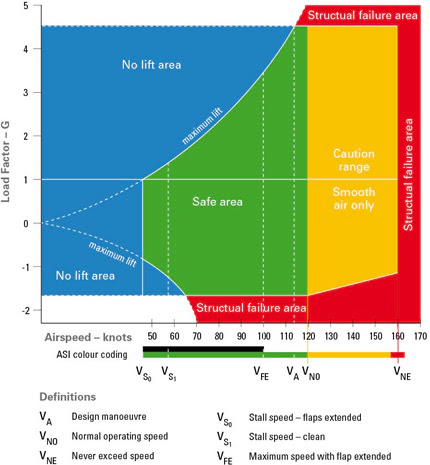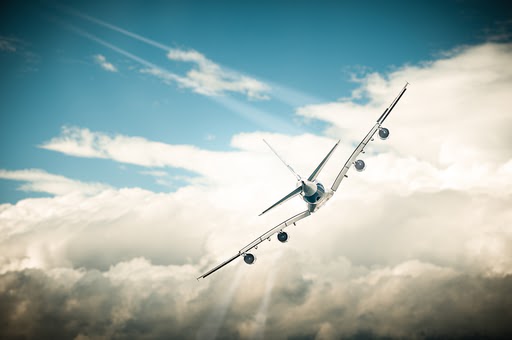If an aircraft is pushed beyond its acceptable load rating in multiples of G force, it will sustain damage to the airframe, which is known as overstressing.
Movies provide us with a great deal of entertainment. Fandoms exist solely to discuss and debate even the most ordinary bits of dialogue, scenarios, and conspiracy theories. While many films are purely for entertainment, there are occasional movies that are grounded in scientific accuracy, forcing you to search for facts.
 Flying an aircraft aggressively can actually result in overstressing, causing temporary or permanent structural damage. (Photo Credit: Mike Mareen/Shutterstock)
Flying an aircraft aggressively can actually result in overstressing, causing temporary or permanent structural damage. (Photo Credit: Mike Mareen/Shutterstock)
Top Gun: Maverick is one such movie. Aside from being a realistic portrayal of the Air Force, it makes some bold claims. For example, Tom Cruise mentions bending an airframe, referring to pilots flying their aircraft so aggressively that it deforms.
Can humans, who are descendants of apes, really bend a well-engineered metal structure while sitting inside it? It turns out, they can!
Can You Really Bend An Aircraft If You Fly Hard Enough?
Indeed, it is possible to bend an aircraft if you fly aggressively enough. This can range from something as simple as needing maintenance to something as serious as a complete loss of the aircraft. The damage caused to an aircraft as a result of aggressive flying is referred to as overstressing. Before further discussion, it is important to understand the forces acting on an airplane during flight.
Forces Acting On An Aircraft
An aircraft experiences various stresses during flight due to the four forces that keep it airborne. These forces are:
- Lift (generated by the upward action of the wing)
- Weight (due to the downward force of the aircraft’s own weight)
- Thrust (generated by the engines, propelling the aircraft forward)
- Drag (generated by airflow over the body, resisting forward motion)
 Forces acting on an aircraft (Photo Credit: AC Drone/Shutterstock)
Forces acting on an aircraft (Photo Credit: AC Drone/Shutterstock)
Aircraft are capable of movement in all three dimensions. As a result, the aircraft is subjected to stress in all three dimensions. These loads can be categorized into one of five types:
- Tension (elongating stress)
- Compression (crushing stress)
- Torsion (twisting stress)
- Shear (separating stress)
- Bending (deforming stress)
An aircraft is designed to withstand all of these stresses. In other words, there is a maximum allowable load limit; exceeding this limit will result in components showing signs of failure. This condition is known as overstressing.
 An aircraft’s airframe is made up of structural members that can sustain damage due to overstressing (Photo Credit: Mario Hagen/Shutterstock)
An aircraft’s airframe is made up of structural members that can sustain damage due to overstressing (Photo Credit: Mario Hagen/Shutterstock)
However, stress does not act in isolation. When it comes to structural damage caused by flying, aircraft are rated in multiples of G-force. This rating correlates to the forces exerted on the aircraft in multiples of 9.8 m/s2 (acceleration due to gravity at mean sea level).
When Does An Aircraft Become Overstressed?
Aircraft have a dynamic center of gravity (CG), which can shift both laterally and longitudinally as the plane moves. To cause an aircraft’s frame to become overstressed, it must be subjected to flying conditions that cause the CG to shift outside the range determined by the manufacturer.
 The correlation between the speed at which an aircraft turns and the G forces it experiences is illustrated in the photo provided by the Aviation Security Service. When an aircraft has poor weight distribution, the center of gravity (CG) can shift to one side, requiring the pilot to make adjustments that disrupt the normal flight path. This disruption puts an abnormal level of stress on the control surfaces, which can lead to deformation if the stress exceeds the threshold values.
The correlation between the speed at which an aircraft turns and the G forces it experiences is illustrated in the photo provided by the Aviation Security Service. When an aircraft has poor weight distribution, the center of gravity (CG) can shift to one side, requiring the pilot to make adjustments that disrupt the normal flight path. This disruption puts an abnormal level of stress on the control surfaces, which can lead to deformation if the stress exceeds the threshold values.
 Similarly, when an aircraft turns, it must bank to one side within the permissible speed limit for that banking angle. Higher speeds require higher banking angles, but this puts significant stress on the aircraft frame. Older planes are not able to perform extreme maneuvers as well as newer aircraft because their structures are not designed to withstand such stress.
Similarly, when an aircraft turns, it must bank to one side within the permissible speed limit for that banking angle. Higher speeds require higher banking angles, but this puts significant stress on the aircraft frame. Older planes are not able to perform extreme maneuvers as well as newer aircraft because their structures are not designed to withstand such stress.
For military applications, such as low-altitude flying, pilots often have to dive and flare at extreme angles to conform to the contours of the earth’s surface. This puts serious stress on the aircraft.
Modes Of Failure Due To Overstressing
Common signs of overstressing include stress cracks, hairline fractures, sheared rivets, and deformed airframes. It is becoming more difficult to detect overstressing as more manufacturers use composite materials instead of metals. This increases the risk of failure due to creep (extended periods of stress on a component) or fatigue (cyclic stressing of a component).
Do All Aircraft Overstress At The Same G Values?
Modern aircraft are designed to withstand high G forces to prevent inadvertent overstressing by pilots. However, certain jobs require aircraft to be flown to their limits, where they may experience forces that can cause significant structural damage.
 Low-altitude flying, which involves flying close to the earth’s contours, puts tremendous pressure on the aircraft’s surfaces. While commercial aircraft are rated for lower G forces, military and stunt aircraft are designed to withstand much higher G loads. This is because they frequently change directions abruptly, exposing them to adverse balancing conditions.
Low-altitude flying, which involves flying close to the earth’s contours, puts tremendous pressure on the aircraft’s surfaces. While commercial aircraft are rated for lower G forces, military and stunt aircraft are designed to withstand much higher G loads. This is because they frequently change directions abruptly, exposing them to adverse balancing conditions.
Conclusion
You may wonder why maneuvers are performed at speeds that cause the airframes to bend. While there are inherent dangers, there is also another perspective to consider. Manufacturers constantly push the limits of their machines, seeking failure points and then improving upon them in subsequent iterations. This continuous development results in highly reliable aircraft capable of astonishing speeds, even multiple times the speed of sound.
